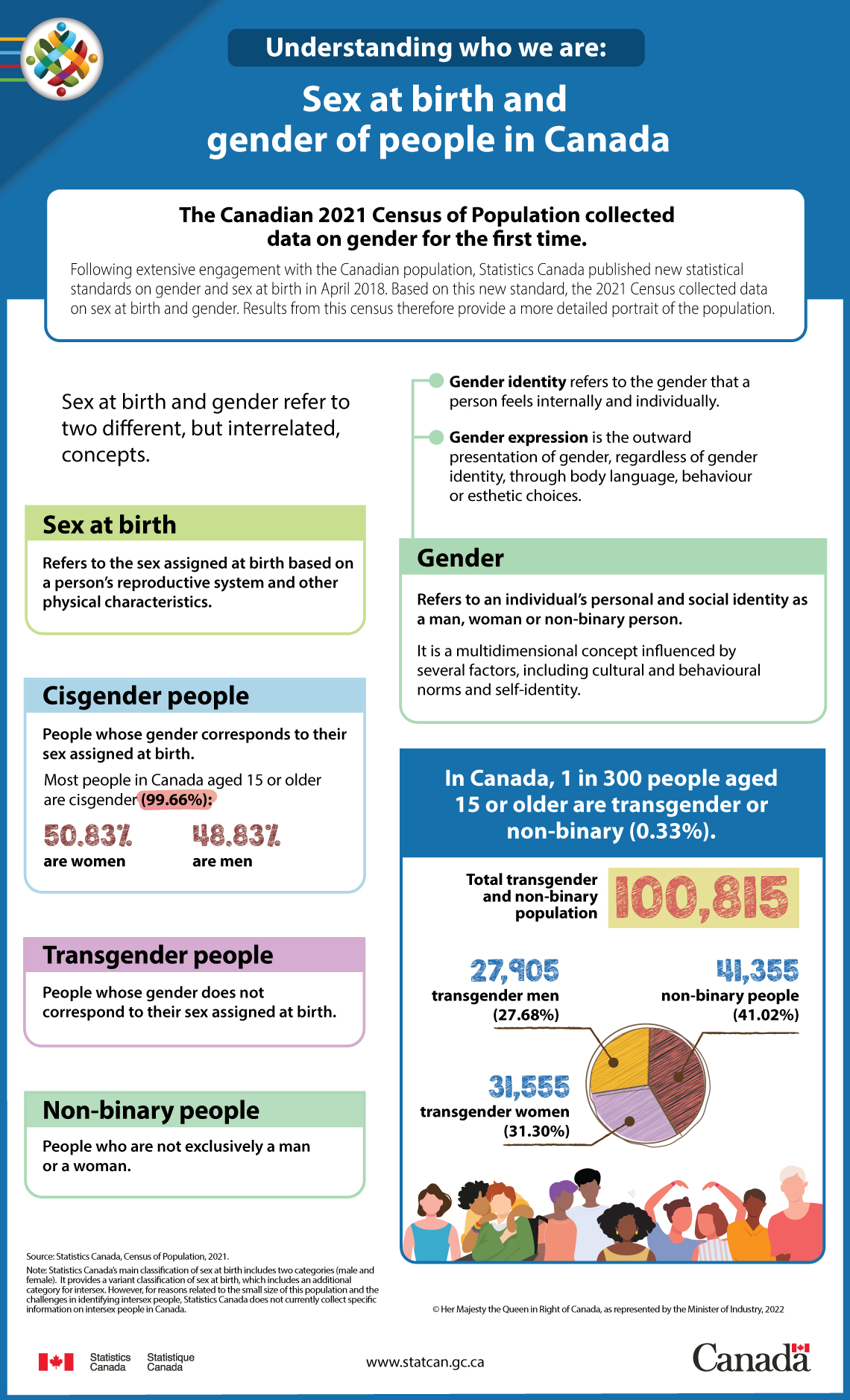Understanding who we are: Sex at birth and gender of people in Canada

Description: Understanding who we are: Sex at birth and gender of people in Canada
The Canadian 2021 Census of Population collected data on gender for the first time.
Following extensive engagement with the Canadian population, Statistics Canada published new statistical standards on gender and sex at birth in April 2018. Based on this new standard, the 2021 Census collected data on sex at birth and gender. Results from this census therefore provide a more detailed portrait of the population.
Sex at birth and gender refer to two different, but interrelated, concepts.
Sex at birth refers to sex assigned at birth based on a person’s reproductive system and other physical characteristics.
Gender refers to an individual’s personal and social identity as a man, woman or non-binary person. It is a multidimensional concept influenced by several factors, including cultural and behavioural norms and self-identity.
Gender identity refers to the gender that a person feels internally and individually.
Gender expression is the outward presentation of gender, regardless of gender identity, through body language, behaviour or esthetic choices.
Cisgender people
People whose gender corresponds to their sex assigned at birth. Most people in Canada aged 15 or older are cisgender (99.66%).
- 50.83% are women
- 48.83% are men
Transgender people
People whose gender does not correspond to their sex assigned at birth.
Non-binary people
People whose gender are not exclusively a man or a woman.
In Canada, 1 in 300 people in Canada aged 15 or older are transgender or non-binary (0.33%).
- Total transgender and non-binary population: 100,815
- 31,555 transgender women (31.30%)
- 27,905 transgender men (27.68%)
- 41,355 non-binary people (41.02%)
Source: Statistics Canada, Census of Population, 2021.
Note: Statistics Canada’s main classification of sex at birth includes two categories (male and female). It provides a variant classification of sex at birth, which includes an additional category for intersex. However, for reasons related to the small size of this population and the challenges in identifying intersex people, Statistics Canada does not currently collect specific information on intersex people in Canada.
- Date modified: